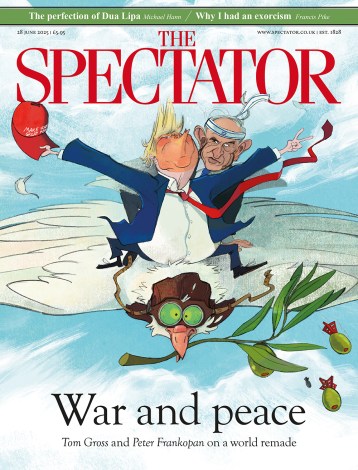The bare statistics of the Great Irish Famine are chilling enough: in 1845-55 more than a million people died of starvation and disease and a further two million emigrated. Ireland’s population fell by more than a third.
John Kelly does an excellent job of sketching the background in The Graves are Walking: massive population growth (the Irish population doubled in the second half of the eighteenth century and almost doubled again in the first four decades of the nineteenth), division of land into ever smaller plots and consequent dependence on the potato, exploitative landlords, resentment at rule by London.
When blight struck the potato crop in 1845, it was not as if the British government was unaware of the danger ‒ ‘If the potato fails . . . famine becomes a fatal certainty’ declared the Home Secretary of the day. And to begin with, disaster was staved off by relief measures and government work-schemes. But successive crop failures, rising food prices, the continuing export of food, the unwillingness of Irish taxpayers to shoulder the burden of relief and the indifference of most landlords to peasant suffering all led inevitably to famine.
Kelly does not spare his readers the horrors: dead babies at their mothers’ breasts, skeletons walking, dogs devouring corpses in the streets, the frabhas dubh (typhus) and ruit fola (dysentery) which killed so many. In a sinister foreshadowing of a twentieth-century horror, he tells of clothing pawned by desperate peasants going to make paper in England and Irish hair fetching a good price on the English market.
The big question is, of course, how in relatively modern times, in a part of the United Kingdom, the world’s most advanced economy at the time, such things could have been allowed to happen. Kelly offers two answers. His first is the ‘perfect storm’ argument: that famine arrived at the time of maximum dependence on the potato by millions of extremely poor peasant farmers and when the Irish economy and infrastructure were primitive by European standards (‘Ireland was Haiti’, as he acutely puts it), thus making relief efforts difficult to execute. This was compounded by the accident of very wet summers, which promoted the spread of blight, and very cold winters, and by worldwide food shortages.
His second answer is to be found in the attitudes of those whose responsibility it was to tackle the famine. Racial prejudice pervaded the British establishment: ‘Irishmen can live on anything’, said the Duke of Cambridge, suggesting they should eat seaweed and grass. ‘Your estate will be of more value . . . with the population reduced’, an absentee landlord was assured by his agent. Landowners often evicted their tenants in order to avoid paying the poor rate ‒ Lord Lucan drove thousands of the destitute off his estates in Mayo.
Above all, Kelly blames a combination of two classically Victorian beliefs: in the inscrutable will of God (‘Providence, who sent the potato disease, meant that many should die’) and in the sanctity of self-help and the minimalist state. The two came together in the person of his arch-villain, Charles Trevelyan, the civil servant responsible for famine relief, who declared, ‘God sent the calamity to teach the Irish a lesson’ and justified his reluctance to give assistance without strings by saying, ‘It would do permanent harm to make dependence on charity an agreeable mode of life’. In effect, he used famine relief as an instrument of social policy, in an attempt to ‘modernise’ Ireland.
In the end ‒ but too late for many ‒ a system of soup kitchens gave three million people a basic daily meal, and private charity raised large sums too (Queen Victoria gave £2 million). But the damage was done. Peasant emigrants to England met slums and racial prejudice. Emigrants to North America endured appalling conditions on voyage and poverty, hunger and disease when they arrived. The famine left a legacy of bitterness (‘My father . . . never said England without adding “God-damn her”’, said one first-generation Irish American), and the post-famine diaspora became a breeding ground for violent terrorism.
Kelly tells his dismal story in vivid prose, with crisp pen portraits of leading figures and a mix of anecdote and analysis. He is not always at home with the details of British history ‒ he refers to ‘the thin red line at Waterloo’, although the term only came into use during the Crimean War forty years later, and he fails to point out that it was O’Connell (who features widely in the book), who likened Robert Peel’s smile to ‘the silver plate on a coffin’. The final chapters, on emigration, seem to belong in a different book. But there is no doubt where his heart lies. He calls, with much justification, the policies employed by British governments, ‘parsimonious, short-sighted, grotesquely twisted by religion and ideology’, and concludes that even if their intent was not genocidal, their effects were.
The Graves are Walking by John Kelly (Faber, £16.99)






Comments